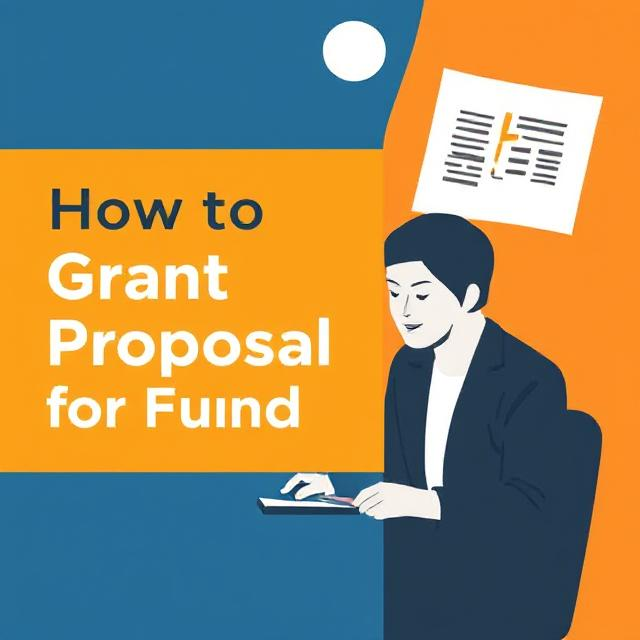
Writing a grant proposal can be a game-changer for individuals, organizations, and businesses seeking funding for projects, research, or new initiatives. Securing a grant requires strategic planning, strong writing skills, and an understanding of what funders are looking for. This guide will walk you through the process step by step, ensuring that your proposal stands out and maximizes your chances of success.
What is a Grant Proposal?
A grant proposal is a formal request for financial support from a government agency, foundation, or other funding body. It outlines your project idea, why it matters, and how the requested funds will be used to achieve the stated goals. A successful grant proposal convinces funders that your project aligns with their mission and is worth investing in.
Common Uses for Grants:
- Research funding
- Nonprofit projects
- Community development initiatives
- Educational programs
- Business innovation and startup funding
Preparing to Write Your Grant Proposal
Before you start writing, preparation is key. Here’s what you need to do:
1. Identify the Right Funding Source
Research and choose a funding source that aligns with your project’s goals. Each grant provider has specific criteria, so it’s essential to ensure your project matches their funding priorities.
2. Understand the Guidelines
Carefully read the grant’s Request for Proposal (RFP) or application guidelines. Pay attention to deadlines, eligibility requirements, and submission formats.
3. Define Your Project Clearly
You must have a well-defined project with clear goals, a timeline, and measurable outcomes. Be specific about what you want to achieve and how the grant will help you reach those objectives.
4. Assemble a Team (if necessary)
If your project requires a team, identify roles and responsibilities. Funders like to see that you have the right people in place to execute the project successfully.
Structure of a Winning Grant Proposal
A typical grant proposal includes several key components. Let’s break down each section:
1. Cover Letter
Your cover letter is your first chance to make an impression. It should be concise, persuasive, and tailored to the specific funder. Introduce your organization, briefly describe your project, and express your enthusiasm for the opportunity to apply.
2. Executive Summary
Summarize the key points of your proposal in one page. This section should provide an overview of your project, including the problem you’re addressing, your solution, and the amount of funding you’re requesting.
3. Problem Statement (Needs Assessment)
Clearly define the problem or need that your project addresses. Use data, research, and real-world examples to illustrate why this issue is important. Funders want to know that your project is relevant and impactful.
4. Project Description (Goals, Objectives, and Methods)
This section outlines your project in detail:
- Goals: Broad statements of what you hope to achieve.
- Objectives: Specific, measurable outcomes.
- Methods: The activities and strategies you’ll use to achieve your objectives.
Be as detailed as possible, breaking down your project into phases if needed. Include a timeline to show how the project will unfold.
5. Evaluation Plan
Explain how you will measure the success of your project. Funders like to see that you have a plan for evaluating outcomes and making improvements. Use quantitative and qualitative metrics where possible.
6. Budget
Provide a detailed budget that outlines how the requested funds will be spent. Break it down into categories such as personnel, equipment, materials, travel, and administrative costs. Make sure the budget is realistic and justified.
7. Sustainability Plan
Describe how you will sustain the project after the grant funding ends. Funders want to know that their investment will have a lasting impact.
8. Organizational Background
Include information about your organization’s history, mission, and previous successes. Highlight your experience and capacity to carry out the proposed project.
9. Appendices
Attach any additional documents that support your proposal, such as letters of support, resumes of key personnel, and relevant research or publications.
Writing Tips for a Strong Grant Proposal
- Be Clear and Concise
Avoid jargon and complicated language. Write in a way that is easy to understand, even for readers who may not be experts in your field. - Focus on Impact
Funders want to know how their money will make a difference. Emphasize the positive outcomes your project will achieve and the broader impact it will have. - Tailor Each Proposal
Customize your proposal for each grant opportunity. Even if you reuse certain sections, make sure to adapt them to meet the funder’s specific requirements and priorities. - Proofread and Edit
Typos and errors can undermine your credibility. Carefully proofread your proposal and consider having someone else review it for clarity and accuracy. - Follow Submission Instructions
Make sure your proposal meets all the submission guidelines, including formatting and required attachments. Missing even a minor detail could disqualify your application.
Common Mistakes to Avoid
- Not Following Guidelines: Always stick to the funder’s instructions.
- Lack of Clarity: Be clear about your goals, methods, and budget.
- Weak Problem Statement: Make sure the need is well-articulated and supported by evidence.
- Unrealistic Budget: Avoid underestimating or overestimating costs.
- Ignoring Deadlines: Submit your proposal on time. Late submissions are rarely considered.
Writing a successful grant proposal takes time, research, and careful planning, but the rewards can be significant. By following this guide and focusing on clarity, relevance, and impact, you’ll increase your chances of securing the funding you need. Remember, every proposal is an opportunity to tell your story and make a compelling case for support.
If you’re new to grant writing, don’t be discouraged by initial setbacks. Learn from each experience, refine your approach, and keep improving. With persistence and dedication, your next proposal could be the one that opens new doors for your project or organization.

